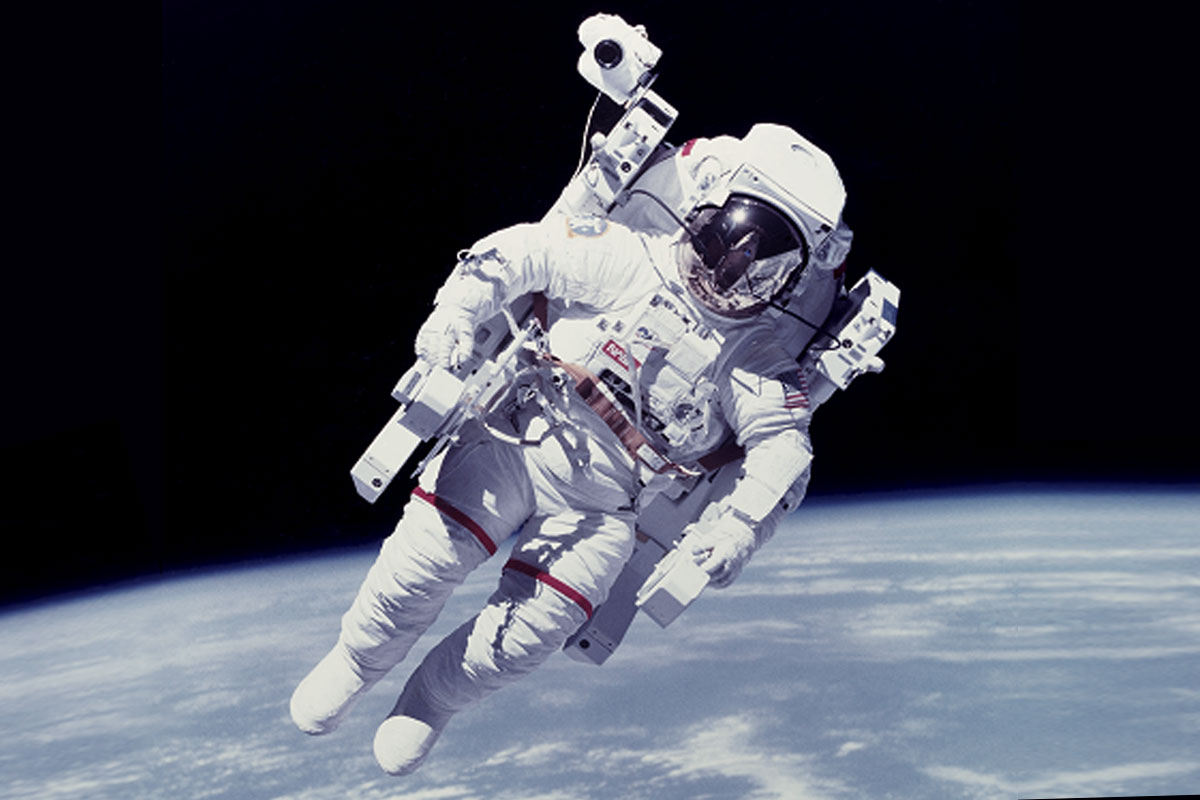
This Spacesuit Comes with a “Take Me Home” Button
Astronauts, firefighters, skydivers and others could benefit from clothing equipped with sensors and other smart tech
CAMBRIDGE, MA—In the zero-gravity environment of space, astronauts can become confused, disoriented and even a little queasy. In such a state, a routine spacewalk quickly can turn dangerous. For an astronaut unable to get his bearings, operating a jetpack and making it back to safety can be a real challenge.
“Without a fail-proof way to return to the spacecraft, an astronaut is at risk of the worst-case scenario: lost in space,” said Kevin Duda, a space systems engineer at Draper. Duda has studied astronauts and their habitat onboard the International Space Station. He and his colleagues recently filed a patent for a self-return system to ensure astronauts are safe, even if no other astronaut can rescue them.
Draper’s director of space systems, Séamus Tuohy, said the return-home technology is an advance in spacesuits that is long overdue. “The current spacesuit features no automatic navigation solution—it is purely manual—and that could present a challenge to our astronauts if they are in an emergency.”
To design a successful self-return spacesuit, Draper engineers had to overcome a host of challenges. The self-return system had to be capable of determining a precise location in a harsh space environment where GPS is unavailable. It had to compute an optimal return trajectory that accounts for time, oxygen consumption, safety and clearance requirements, and it had to be able to guide a disoriented and possibly unconscious astronaut effectively to safety.
The system can operate the jet pack autonomously or give the astronaut directions with a combination of visual, auditory and sensory cues through a web of sensors and a helmet visor display. If something were to happen during a spacewalk (also known as an Extravehicular Activity, or EVA) the self-return system can be initiated by the astronaut, a space station crewmember or mission control.
Draper’s “take me home” system features options. According to the patent, the spacesuit’s sensors can be configured to monitor movement, acceleration and relative position of the crewmember to a fixed object, such as an accompanying orbiting spacecraft. The navigation, guidance and control modules can also accommodate various scenarios. For instance, the navigation module can be configured using GPS, vision-aided navigation or a star-tracker system. To improve the astronaut’s positioning and orientation, Draper has developed software that fuses data from vision-based and inertial navigation systems and benefits from the advantages of both sensing approaches.
The current research into spacesuits, which was funded by NASA, is part of Draper’s growing human-centered solution portfolio. The portfolio includes a wearable technology that helps the wearer recognize more data from their surroundings and understand them faster. Applications in the design of navigation systems like Draper’s “take me home” system could serve as an added safety measure for first responders and firefighters as they navigate smoke-filled rooms, skydivers hurtling toward Earth and scuba divers who might become disoriented in deep water.
Source: THE CHARLES STARK DRAPER LABORATORY, Engadget, Tech Crunch, Popular Mechanics
